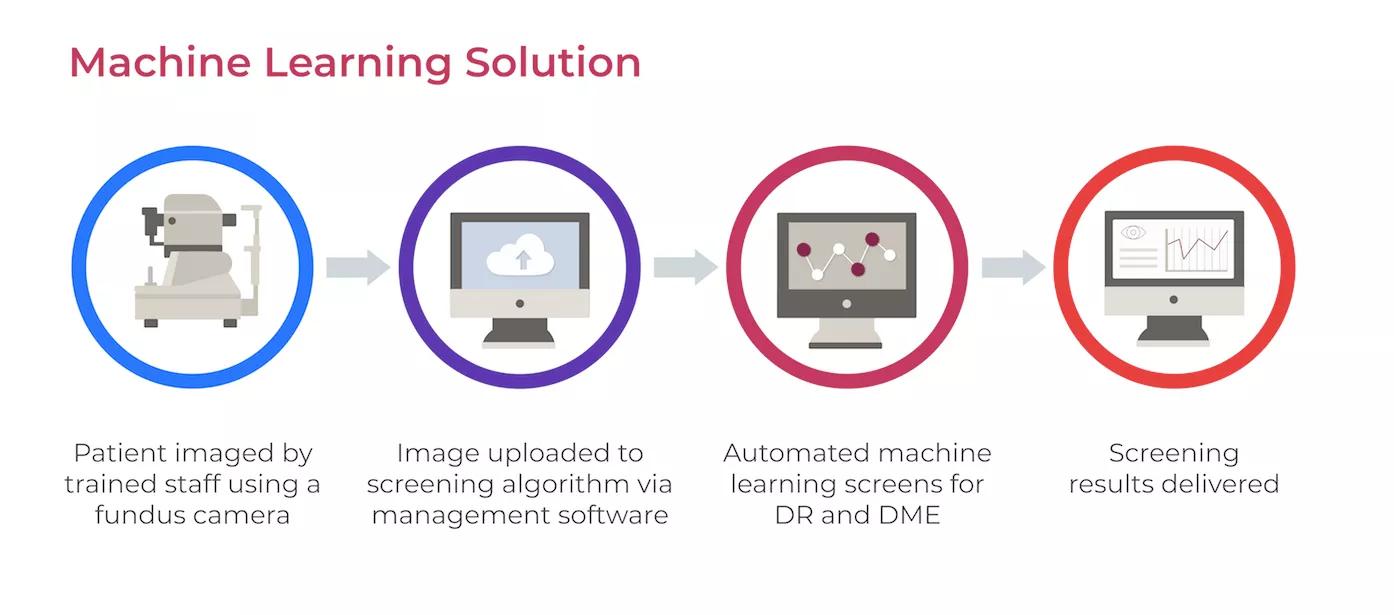Launching a powerful new screening tool for diabetic eye disease in India

Launching a powerful new screening tool for diabetic eye disease in India
Over the last several years, we’ve pursued a number of initiatives exploring eyes as a window into human health. Tools that enable earlier screening, diagnosis and treatment of disease bring us a step closer towards preventive and proactive healthcare. Together, Verily and Google are applying machine learning to screening for diabetic retinopathy (DR) and diabetic macular edema (DME), two of the leading causes of preventable blindness in adults. Since beginning this project more than three years ago, we’ve developed a machine learning algorithm to power automated screening with the goal of detecting disease earlier and expanding access to screening.
Verily and Google have been conducting a global clinical research program with a focus on India, where studies involving Aravind Eye Hospital and Sankara Nethralaya demonstrated that the algorithm performed on par with general ophthalmologists and retinal specialists assessing the images for disease. Our promising research results have led to the first real world clinical use of the algorithm through Verily and Google’s retinal diagnostic program at Aravind Eye Hospital in Madurai, India this year.
In addition to extensive research, we are assessing the algorithm’s readiness for use by verifying its safety and effectiveness. As part of our broad retinal program, we rigorously tested the technology and completed comprehensive regulatory and quality reviews. We’re proud to share that Verily has received CE mark for the algorithm, signifying that we have met the European Union Directive’s standards for medical devices and validating our approach.
In India, a shortage of more than 100,000 eye doctors – and the fact that only 6 million out of 72 million people with diabetes are screened – means that many cases of DR go undiagnosed and untreated. Dr. R. Kim, the chief medical officer and chief of retina services at Aravind Eye Hospital, has seen the impact firsthand and believes machine learning has the potential to help exponentially more people get the screening they need.
HOW IT WORKS
At Aravind Eye Hospital, physicians like Dr. Kim are now using the algorithm in a clinical setting.
Trained technicians take one image per eye and the algorithm assesses the image for DR and DME. The results offer quick feedback so the technicians can immediately determine whether patients need to be referred to an eye care physician, and reduce the number of individuals who go without screening or clear follow up.

Our research efforts in India continue in collaboration with Aravind’s vision centers, which extend eye care to some of the remote and rural communities that account for nearly 70% of India’s population. By working with physicians and available cameras at these local clinics, we can adapt our screening technology for more isolated environments and better understand how to reach and screen people that are not in close proximity to a specialist.
Building off our initial efforts, we believe that our machine learning algorithm could be helpful in many other areas of the world where there are not enough eye doctors to screen a growing population of people with diabetes. We recently launched a prospective study with Rajavithi Hospital, which is operated by the Ministry of Public Health in Thailand, studying the impact of the algorithm in a national DR screening program. We are also collaborating with Nikon and its subsidiary Optos to explore additional geographies and settings where machine learning tools for screening for diabetic eye disease could have an impact. In 2019, we're excited to expand our research and clinical efforts, and ultimately screen more individuals to prevent disease.